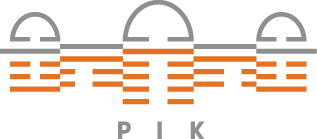Models
The RoSE multi-model ensemble experiment is conducted by five modeling teams with the participation of four global integrated assessment models (GCAM, IPAC, REMIND, WITCH) and one regional energy system model (China MARKAL).
The Regional Model of Investments and Development (REMIND)
RoSE Team (PIK):
Ioanna Mouratiadou, Elmar Kriegler, Gunnar Luderer, Nico Bauer, Robert Brecha, Christoph Bertram, Lavinia Baumstark, Ottmar Edenhofer
Brief Model Description:
The global multi-region model REMIND represents an inter-temporal energy-economy-environment model which maximizes global welfare based on nested regional macro-economic production functions. REMIND incorporates a detailed description of energy carriers and conversion technologies (including a wide range of carbon free energy sources), and allows for unrestricted inter-temporal trade relations and capital movements between 11 world regions. Mitigation costs estimates are based on technological opportunities and constraints in the development of new energy technologies. By embedding technological change in the energy sector into a representation of the macroeconomic environment, REMIND combines the major strengths of bottom-up and top-down models. Economic dynamics are calculated through inter-temporal optimization, assuming perfect foresight by economic actors. This implies that technological options requiring large up-front investments that have long pay-back times (e.g. via technological learning) are taken into account in determining the optimal solution.
The Global Change Assessment Model (GCAM)
RoSE Team (JGCRI-PNNL):
Kate Calvin, Jae Edmonds, Leon Clarke
Brief Model Description:
GCAM is a dynamic-recursive model, which links a global energy-economy-agricultural-land-use model with a suite of coupled gas-cycle, climate, and ice-melt models, integrated in the Model for the Assessment of Greenhouse-Gas Induced Climate Change (MAGICC). GCAM tracks emissions and concentrations of 15 greenhouse gases and short-lived species. An important feature of the GCAM is that energy, agriculture, forestry, and land markets are integrated with the extent of unmanaged ecosystems and the terrestrial carbon cycle. The GCAM thus produces outputs that include not only emissions of 15 greenhouse gases and aerosols but also agricultural prices, land use, and stocks of terrestrial carbon.
The World Induced Technical Change Hybrid Model (WITCH)
RoSE Team (CMCC / FEEM):
Enrica De Cian, Massimo Tavoni, Fabio Sferra, Carlo Carraro
Brief Model Description:
The WITCH model developed by the climate change modelling and policy group at FEEM is an integrated assessment model in which the non-cooperative nature of international relationships is explicitly accounted for. The regional and intertemporal dimensions of the model make it possible to differentiate climate policies across regions and over time. In this way, several policy scenarios can be considered. WITCH is a truly intertemporal optimization model, in which perfect foresight prevails over a long term horizon covering the whole century. The model includes a wide range of energy technology options, with different assumptions on their future development, which is also related to the level of innovation effort undertaken by countries. Special emphasis is put on the emergence of carbon-free backstop energy technologies in the electricity as well as the non-electricity sectors, and on endogenous improvements in energy efficiency triggered by dedicated R&D investments contributing to a stock of energy efficiency knowledge.
The Integrated Policy Assessment Model for China (IPAC)
RoSE Team (ERI-NDRC):
Kejun Jiang
Brief Model Description:
IPAC is a multi-model framework, that links the social and economy development, energy activities and land use activities, and forms a full range of emission analysis. IPAC includes mainly four parts: (1) society, economy and energy activities module, which mainly analyzes the demand and supply in the condition of social and economic development, and determines the energy prices; (2) energy technology module, which analyzes the short and mid-term energy utilization technologies under different conditions, and determines the energy demand under different technology compositions. The energy demand in energy technology module will modify the short and mid-term energy demand in society, economy and energy activities module, which makes the energy analysis in macro-economic model better reflect the short and mid-term energy activities; (3) land use module, which analyses the emissions from land use process. This mainly includes emissions from agricultural food supplies, stock raising, forest management and biomass energy production; (4) industrial process emission module, which mainly analyzes the emissions from all kinds of industrial productions.
The China MARKet ALlocation Model (China MARKAL)
RoSE Team (TU):
Wenying Chen
Brief Model Description:
The China MARKAL model is a dynamic linear programming energy system optimization model which has been adopted to study China’s future energy development strategy. MARKAL is based on a Reference Energy System (RES). It incorporates the full range of energy processes and it is able to consider existing technologies as well as advanced technologies which may be deployed in future. The objective function of the model is to minimize energy system cost, including the capital costs of end-use (demand) technologies, capital costs of electricity generating technologies, fuel costs, infrastructure costs (such as pipelines), and operating and maintenance costs. The China MARKAL model is developed in 5-year intervals extending from 2005 through 2050. It considers not only conventional fossil fuels such as coal, oil, natural gas, coal gas etc., but also new and renewable energy like hydro, nuclear, wind, solar, geothermal, and some synthetic fuels like methanol, DME etc. Five sectors, namely agriculture, industry, commercial, residential (divided into urban and rural) and transportation are considered in China MARKAL, which are further divided into several sub-sectors. Energy systems analysis modelling by application of the China MARKAL energy model is used to determine the least-cost mix of technologies and fuels to meet the predicted energy service demands.

